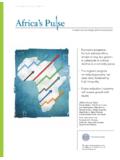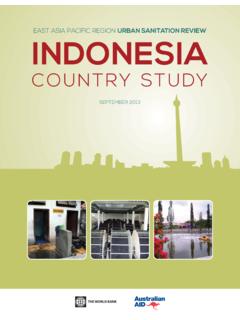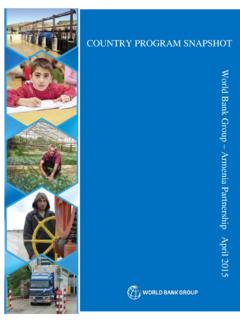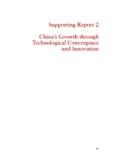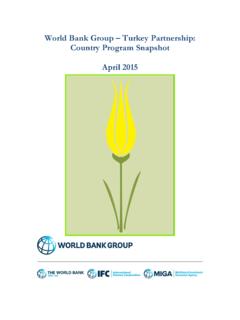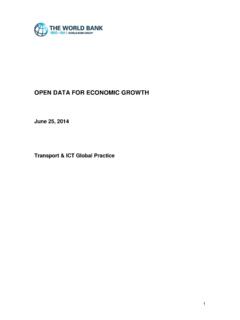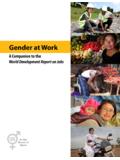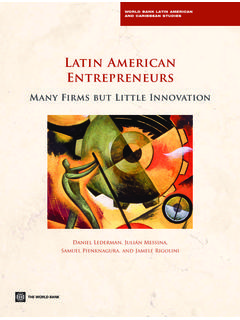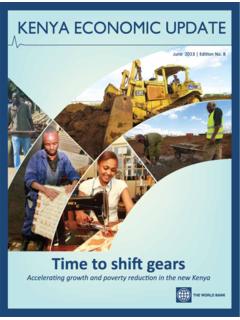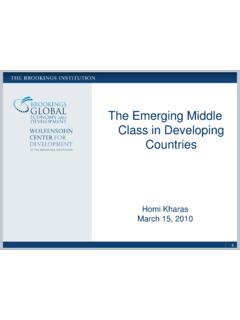Transcription of MIC Forum: The Rise of the Middle Class - World …
1 Augusto de la Torre Jamele Rigolini MIC Forum: The Rise of the Middle Class We would like to thank Shubham Chaudhuri, Stefano Curto, Maria Davalos, Carolina Sanchez-Paramo and Joao Pedro Wagner de Azevedo for helpful comments, discussions and data. Motivation The rise of the global Middle Class is recognized as a key megatrend sweeping the planet (Global Trends 2030, NIC) There is no doubt that the World is becoming Middle 72% of the World population lived in MICs in 2011, vs. 22% in 1990 45% of the World GDP originated in MICs in 2011, vs. 21% in 1990 ..but is it also becoming Middle Class ? There is a need to understand the nature and implications of the rapid pace of poverty reduction and rise of the Middle Class The rise of the Middle Class represents a tectonic shift in social structure that requires a shift in policies Global Trends 2030: Alternative Worlds.
2 National Intelligence Council. 2 Concepts and definitions Middle Class : households who face a low probability to falling into poverty In LAC, households earning approximately between 10 and 50 dollars per person per day, on a PPP-adjusted basis The concept automatically defines another - people who are not poor yet not Middle Class : the vulnerable Intra-generational mobility: directional income movement , upward or downward Class transitions Inter-generational mobility: equality of opportunity , how much children s outcomes in life are independent from parents social economic (particularly educational) background 3 The Middle Class rose significantly over most of the emerging World Change in social structure in the emerging World , circa 2000 2010 Despite positive trends, most people remain poor or vulnerable to poverty - 20 40 60 80 1002000s2010s2000s2010s2000s2010s2002s20 10s2000s2010s2000s2010sSouth AsiaMiddle East &North AfricaSub-SaharanAfricaEast Asia &PacificLatin America &CaribbeanEastern Europe& Central AsiaPercentage of population Extreme PoorPoorVulnerableMiddle ClassNote: estimates for LAC are based on income, for the other regions on expenditures.
3 Estimates are population weighted and only include low and Middle income countries. Source: PovCal and household surveys. 4 Under present trends, a massive population wave will join the Middle classes by 2030 Middle - Class growth forecasts, 2005 2030: If trends continue, the Middle Class in low and Middle income countries will grow from 5% in 2005, to 25% in 2030. China alone will add one billion people to the Middle Class 040080012001600200020052030 Number of people (millions) Eastern Europe and CentralAsiaChinaEast Asia (excl. China)Latin America and theCaribbeanMiddle East and North AfricaSouth AsiaSub Saharan AfricaSource: Bussolo and Murard (2011). 5 But relatively few Middle income countries are Middle Class societies Size of the Middle Class and GDP per capita, circa 2010 Note: estimates for LAC are based on income, for the other regions on expenditures.
4 Source: PovCal and household surveys. 024681012141618200204060 GDP per capita (PPP, Thousands of US $) Percentage of population SmallModerateLargeGDP per capita (PPP)6 In LAC, intra-generational mobility has been mostly upwards Class transitions in Latin America over the last 15 years (circa 1995 2010) Most of the former poor are now vulnerable, not yet Middle Class Source: Ferreira, Messina, Rigolini, Lopez-Calva, Lugo and Vakis (2013). 7 Policies and economic dynamics that move people out of poverty are not necessarily the same as those that help people join the Middle Class Contribution of income growth vs. changes in inequality in: Note: Based on Datt-Ravallion decompositions. Reference years are circa 1995-2010 for LAC, and circa 2000-2010 for ECA. Averages are population weighted. Source: Azevedo (2012 and 2013). (0 to 4 USD)ECA ( to 5 USD)Change (% points) GrowthChange in inequalityReducing poverty -5051015202530 LAC (10 to 50 USD)ECA (10 to 50 USD)Change (% points) GrowthChange in inequalityIncreasing the Middle Class Inequality has played contrasting roles across regions but starting points were different 8 High intra-generational mobility does not imply high inter-generational mobility, especially in LAC Relationship of average PISA test scores and parents socioeconomic background, 2009 Education is the great equalizer of opportunities across generations Intergenerational immobility has worse implications when educational systems perform poorly More inter-generational mobility Better performance Source: Ferreira, Messina, Rigolini, Lopez-Calva, Lugo and Vakis (2013).
5 IDN THA ALB AZE BGR KAZ KGZ LTU LVA ROU RUS SRB TUR ARG BRA CHL COL MEX PAN PER URU AUS AUT BEL CAN CHE CZE DEU DNK ESP EST FIN GBR GRC HUN IRL ISL ISR ITA JPN KOR LUX NLD NOR NZL POL PRT SVK SVN SWE USA 300 350 400 450 500 550 20 30 40 50 East Asia & Pacific Eastern Europe and Central Asia Latin America & Caribbean High income OECD Average test score Effect of parents socioeconomic background on reading test scores 9 A large share of the Middle Class in a country s population is associated with positive economic and social changes Normalized impact of a rise in the Middle Class Note: The normalized impact represents the impact (measured in standard deviations of each outcome variable) of a standard deviation increase in the Middle Class . Results draw from a multivariate regression for 107 countries. Source: Loayza, Rigolini and Llorente (2012).
6 HealthExpenditures(% GDP)Public EducationExpenditures(% GDP)TradeLiberalizationCredit MarketLiberalizationDemocracy ScoreCorruption Score10 But a larger Middle Class does not automatically lead to shared prosperity and inclusive societies The Middle Class may opt out of the social contract there is a risk of a bad equilibrium Whereby the Middle Class opts out of public services, does not pressure for institutional improvements, and is unwilling to contribute to public goods Good government policy and democratic institutions are essential to close the wedge between Class interests and broader social interests There is a need to incorporate explicitly equality of opportunity into public policy (in particular for education) The quality of public services plays a key role in encouraging opting into the social contracts and achieving equality of opportunities A good equilibrium hinges on the policies of a responsive government 11 Policy areas of possible focus.
7 Commonalities across regions Improve the quality of public services to achieve greater equality of opportunity and more inclusive social contracts, , shared prosperity Depending on the context, act on the revenue side, but also on spending effectiveness and priorities As the Middle Class expands, complement targeted social assistance with improved social insurance policies Calibrate social policies to the vulnerable Manage demographics Balance the needs of aging populations with the productivity challenges faced by the next generations of workers 12 Policy areas of possible focus: Latin America & the Caribbean Incorporate equality of opportunities more explicitly into public policy Sound economic management and social inclusion can go hand in hand Improve access and quality of education, including tertiary Embark on a second generation of reforms to the social protection system Calibrated to the vulnerable and with a better integration of social assistance and social insurance Break the bad equilibrium of low taxation and low quality of public services Use the commodity revenue bonanza to significantly raise quality of public services, including education 13 Policy areas of possible focus.
8 Eastern Europe & Central Asia Capitalize on the legacy of high equality and strengthen pathways into the Middle Class Improve quality of services and rationalize provision without compromising high access Manage better risk by improving integration and complementarity between social assistance and social insurance Strengthen employment creation in the private sector Regain momentum in the implementation of the modernization agenda, with a focus on business climate and public sector reform Invest in new skills and promote labor mobility; improve the design of tax and social benefit systems to promote formal work Manage demographics Avoid risk of growing gap between Middle Class and vulnerable by aligning incentives of aging Middle Class with the needs of other groups ( youth) 14 Policy areas of possible focus: East Asia & Pacific Ensure equality of opportunity to the skills of East Asia & Pacific s growing labor force Equality of opportunity is especially important for those in lagging regions and in traditionally poorer segments of the population Manage the roll-out of social protection systems that a growing Middle Class will demand, in a way that mitigates the fiscal burden and impact on growth Strong focus should be put on the rapidly urbanizing and increasingly aging population Redefine the social contract through more open government, channels for citizen engagement, and better service delivery, to ensure that the growing Middle Class stays engaged 15 Thank You For more food for thought, see: Economic Mobility and the Rise of the Latin American Middle Class 16

